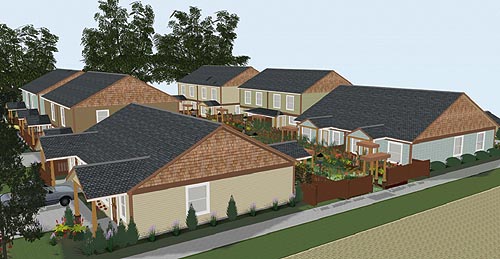 The downturn has stalled many housing sectors, but one area that’s thriving thanks to local and federal funding is sustainable low-income housing projects.
The downturn has stalled many housing sectors, but one area that’s thriving thanks to local and federal funding is sustainable low-income housing projects.
 |
Juneberry Lane in Oregon City.PHOTO COURTESY OF EARTH ADVANTAGE |
The downturn has stalled many housing sectors, but one area that’s thriving thanks to local and federal funding is sustainable low-income housing projects.
Two green low-income projects in the state are taking the additional step of getting a community certificate from Earth Advantage, which requires community education and that each house have a low environmental impact.
Verde Village in Ashland, a 68-home green development, is stalled while 15 of its low-income units are moving forward. Eight of the 15 will be completed this fall with a loan from USDA Rural Development. As a prerequisite to the loan each household has to spend 32 hours a week helping to build their home.
The 12-home Juneberry Lane in Oregon City is a low-income sustainable housing project set for completion in early September. It’s funded by a variety of sources, with the majority coming from Clackamas County Community Development and a loan from Oregon City-based Lewis & Clark Bank.
“We can get the financing because it’s low-income housing,” says Sarah Buckley, executive director of Clackamas Community Land Trust. “For our buyers it’s their only option for owning a house. The lender feels a little better because of the buyer demand and the other funding.”


